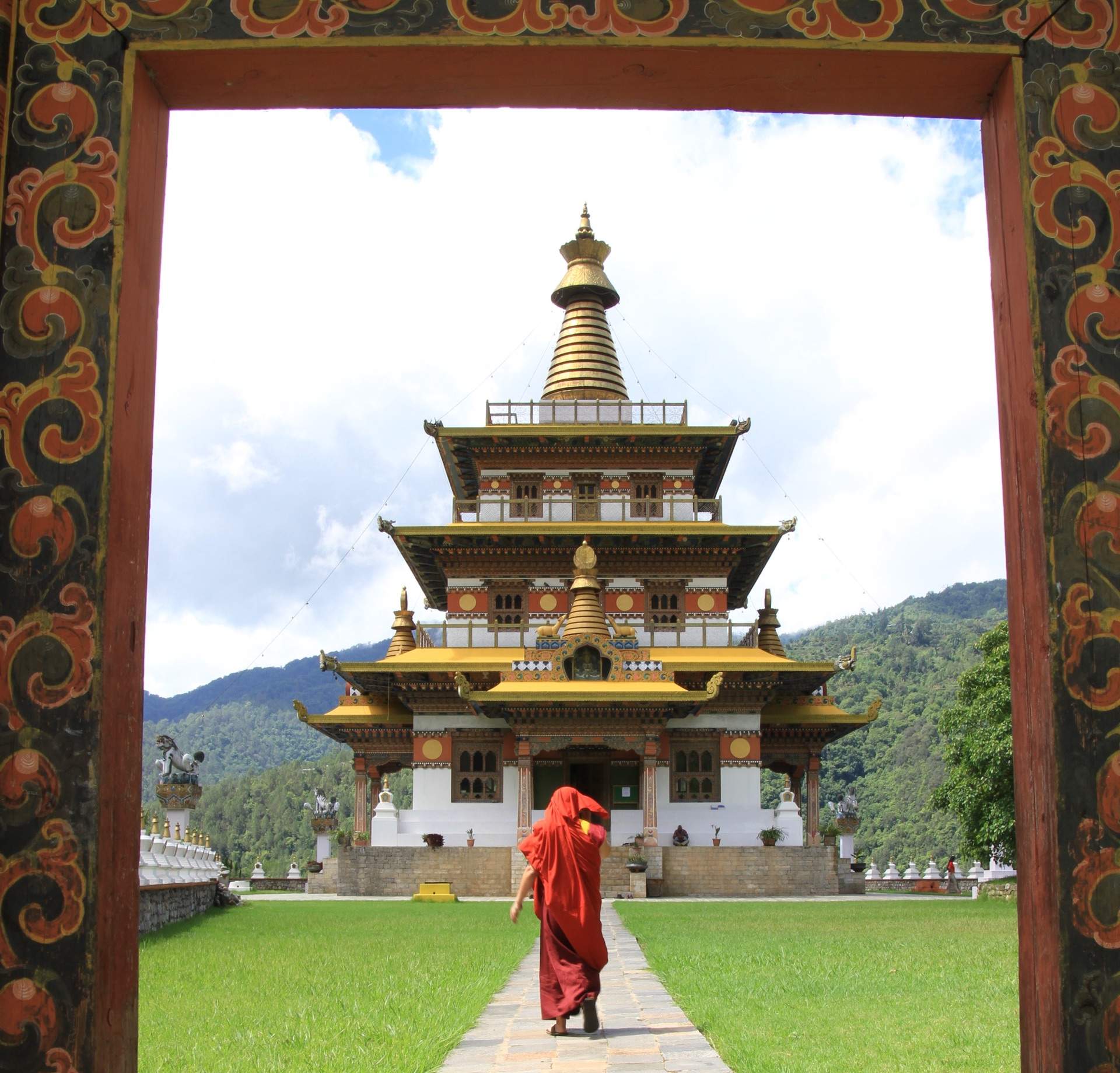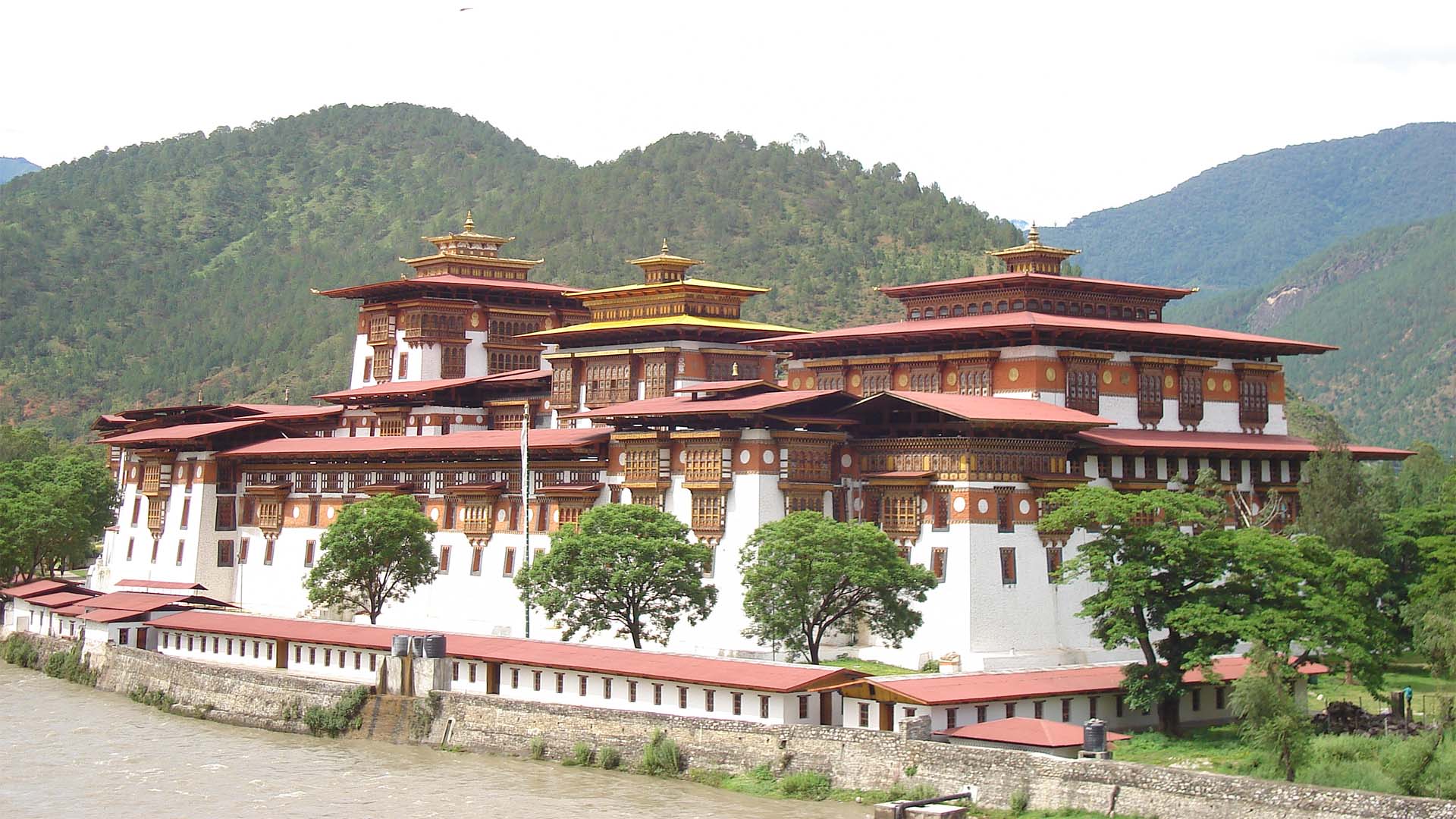Punakha
Punakha Valley
Punakha Valley lies at an altitude 4420 feet. It served as the capital of Bhutan until 1955. It is the winter seat of the Je Khenpo (Chief Abbot) and the monk body at present. The Punakha valley is a fertile valley with a temperate climate. The valley is fed by the Pho Chhu and the Mo Chhu rivers famous for rafting.


Khamsum Yulley Namgyal Chhorten
This chorten is built on a ridge above the Punakha valley. It took around nine years to build the chorten. It is said that the Bhutanese craftsmen consulted Holy Scriptures to construct this 4 storey temple. The temple was built by Her Majesty, the Queen Mother Ashi Tshering Yangdon Wangchuck.
Punakha Dzong
This Dzong was built by the Zhabdrung Ngawang Namgyal in 1637. It is built at the junction the Pho Chu and Mo Chu Rivers. The annual Punakha Tshechu (Festival) is held here. The monk body resides in this Dzong in winter.

Sangchhen Dorji Lhuendrup Lhakhang
The nunnery is perched on a ridge amongst pine trees, overlooking the Punakha and Wangduephodrang Valley. The temple has magnificent traditional Bhutanese structures and houses the 14 ft. bronze statue of Avalokiteshvara. This is one of the biggest handwork of local Bhutanese artisan. The temple also houses a permanent higher learning and meditation center for nuns. Apart from religious training, the nuns are also trained in skills such as tailoring, embroidery, statue making and Thangka painting, etc.
Talo Village
Talo village, lying at an altitude of 2800 m is scattered along the hilly slopes and is known for its cleanliness and hygiene among Punakha villages. The women of Talo are particular known for their beauty and the beautiful farm houses of the village have their own flower gardens. On the hill slopes of Talo village corn and sweet peas are grown in abundance.
Ritsha Village
Punakha is famous for rice farming. Both, red and white rice are grown here. Ritsha, means “at the base of a hill” and is a typical village in Punakha. The village houses are made of pounded mud with stone foundations. Each house is only two storey high surrounded with gardens and rice fields. The gardens usually have fruit bearing plants like oranges and papaya among the organic vegetables. In recent years the farm work has been mechanized. Power tillers instead of bullocks are used to plough the fields and villagers have become relatively prosperous. This is one of the model rice growing village in western Bhutan.
Limbukha Village
Limbukha village is known for Bhutan’s famous red rice which is supposed to have medicinal values and needs clean mountain spring water so the taste is god and nutritional value maintained. Legend says that during the medieval wars, the people of Limbukha (also known as limpus always volunteered as peace negotiators, so the village is known for its love of peace and tranquillity. This is also depicted in the “Serda” festival where men are found carrying peace flags instead of swords.
Nalanda Buddhist College
Locally, it is known as Dalayna. The place can be a great place for a stunning view and for interaction with local Buddhist monks.

